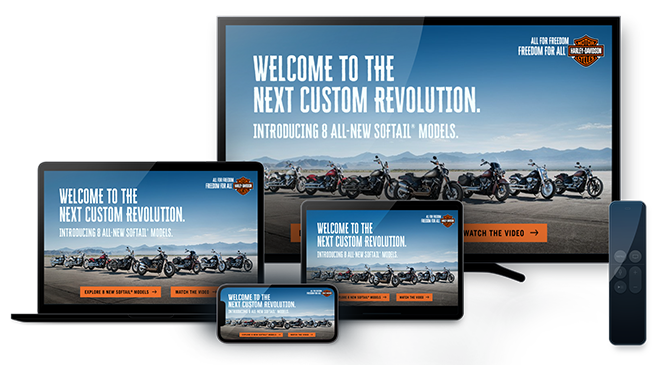The Consumer-First Approach To Commerce Media Network Success

Your airline is an ad platform now – and so is your bank. Commerce media networks are one of the most interesting areas of growth in advertising, and at Cannes Lions, plenty of them were onsite to talk about it.
That’s a conversation that we explored at the Infillion Café at Cannes, where our Enterprise General Manager, Jeremy Woodlee, was joined by two of the minds behind some of the most interesting players in the emerging commerce media space – Henry Stokes, head of PayPal Ads in the U.K., and Alissa Spiwak, director of west and midwest advertising partnerships for United Airlines’ Kinective Media. The panel was moderated by Mollie Garza, founder of consultancy MJGrowth and a veteran of media network operations at companies like Walmart and iHeart.
The growth of commerce media networks follows on the heels of retail media networks, which are operated by the likes of Walmart, Amazon, and Target and take advantage of their shopper data and both digital and in-store properties. Commerce media networks are a little different. “Retail media is focused on those major retailers we know and buy our products from, whereas there’s a whole bunch of adjacent businesses who are data-rich and capable of delivering great targeted ad experiences and targeted content to users,” PayPal’s Henry Stokes said. “We’ve seen that explosion happen right in front of our eyes here.”
RMNs vs. CMNs: The important differences
Commerce media networks, like retail media networks, have a wealth of data on their customers. But beyond that, there are some key differentiations. Commerce media networks in sectors like travel and financial services have digital footprints that in some cases vastly outstrip those of many retailers. PayPal has heavily used mobile apps (including Venmo in the U.S.) and integrations with countless retailers; United has its in-flight entertainment systems, out-of-home inventory at airports and lounges, and an app that it revamped last year.
“You have retailers as an example of how to do this, but there’s so many ways of going down this path,” Infillion’s Jeremy Woodlee said.
The other key differentiator is that retail media networks grew as quickly as they did because they physically sell products, and encouraging the companies that make those products to buy ad inventory is a relatively easy sell. Commerce media networks are largely selling ads for products that they don’t sell themselves.
The flip side of this is that commerce media networks have more obvious full-funnel marketing opportunities on their owned properties, because they aren’t just accessed when people are intending to shop. “What we are starting to explore more is retargeting. We have manifest data. We know that you were on this flight and so you were exposed to this ad. When you check into a United Club you have to show them your boarding pass. And so we know who was in the club and where,” United’s Alissa Spiwak said. “When you think about the moment that you check in, there’s a real last-mile opportunity to influence, maybe, someone’s rideshare choice.”
Keeping the customer first
But could this be intrusive? After all, people go to retailers to shop. Commerce media ads could easily be seen as inserting ads into experiences where consumers aren’t expecting to see ads and don’t particularly want them.
Alissa Spiwak said that commerce media networks need to focus on putting their remarkably precise data to use in service of hyper-relevance to individual consumers. “There’s always been ads on airplanes, it’s just been the same three ads over and over again, and now we want to serve you the ads that are relevant to you,” she said. “If you’re flying to a specific destination and you’re served an ad for sunscreen because you’re going to the Bahamas…it’s not disrupting the experience at all.”
PayPal’s Henry Stokes agreed. “Put the customer at the center of everything you do. PayPal does genuinely want to help our customers have a better shopping experience, and we talk about winning checkout at PayPal,” Stokes said. “It’s getting competitive. There are options there. People can pay in different ways, and so for PayPal to be relevant it has to deliver the right price, at the right time, with the right offer, with the right way to pay. There’s a range of options and enhancements that we can make to that shopping experience for the customer.”
Deploying the latest advancements in tech
The rise of commerce media comes alongside the explosion of generative and agentic AI, which both United and PayPal see as a way to continue to be customer-forward. United is leaning into agentic AI to make customer interactions more personalized, Alissa Spiwak explained. “We’ve seen that consumers want to know, if their flight’s delayed, why it’s delayed,” she said. So, those text messages now contain the passenger name, an explanation of what caused the delay, and a little bit of solidarity with their frustration (airlines can’t control the weather, after all). “We know that people want that personalization [so we’re] using AI to create all of these messages that are customized to you to really give a personal voice for our customers.” It’s tangibly boosted United’s ever-important net promoter score (NPS) metric.
PayPal recently partnered with AI search engine Perplexity, so that users can seamlessly pay with PayPal or Venmo at checkout when they’ve used Perplexity to look for shopping recommendations. “That dynamic of people shopping within their gen-AI search engine and trusting the recommendations that search engine is making…That decision-making takes place in the search engine,” Henry Stokes said. “Those retailers are seeing less traffic. They’re seeing less browsing on their websites because that behavior is taking place elsewhere. We have to facilitate that instantaneous transaction for those retailers.”
For a company like Infillion, which can use the MediaMath DSP technology to serve as the “backbone” of commerce media networks the way we’ve done in retail media with companies like Walmart Connect Mexico, this demand for customer-first approaches and hyperpersonalization means offering composable solutions to RMNs and CMNs to meet an individual company’s needs.
“We want to show up for our retail media and commerce media clients where they are, and help them through this journey, and provide them the tools and the infrastructure to do what they need to do,” Jeremy Woodlee said. “What is needed in this moment is not out-of-the-box technology, but customized technology and support.”
MediaMath, after all, was just relaunched last year and quickly put to work providing a programmatic technology solution that’s both flexible and scalable. “It’s an emerging space and we’re emerging in it as well,” Woodlee said.
Want more insights from our Cannes stage? It’s all getting shared on the Infillion blog and LinkedIn account.
Subscribe to our blog:
Related Posts:

From Data to Decisions: Preparing Retail Media for AI Agents
Why infrastructure maturity is the key to future growth Artificial intelligence is already reshaping digital advertising. Predictive algorithms now steer bidding strategies, and machine learning models help refine audience targeting. But in retail media, the...

Retail Media’s Budget Tug-of-War: Uniting Brand and Demand Through Full-Funnel Strategies
Retail media has grown up fast. What started as a straightforward way to capture search dollars at the point of purchase is now one of the most scrutinized and strategic channels in the industry. Retail media is no longer just about conversion rates and ROAS—it’s...

From Hype to Reality: Agency Perspectives on Retail Media Networks
Every week seems to bring a new retail media launch or partnership announcement. Investment is rising, innovation is happening, and retailers across verticals are racing to build and/or improve their media networks. But when we surveyed agency leaders for our latest...
Let's Connect

